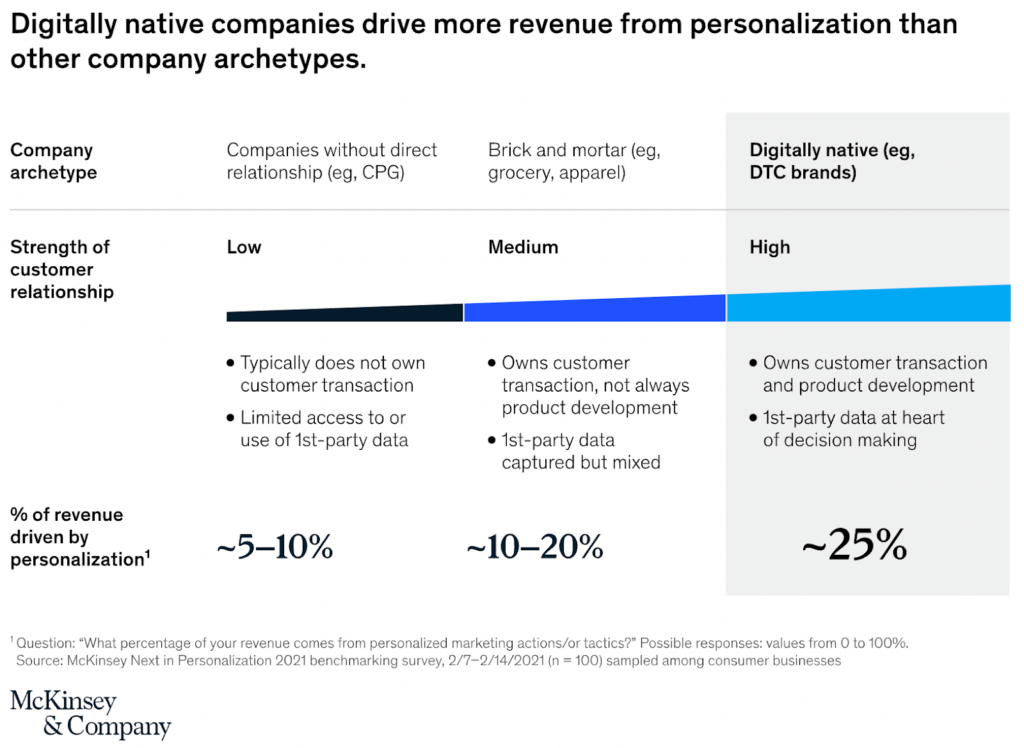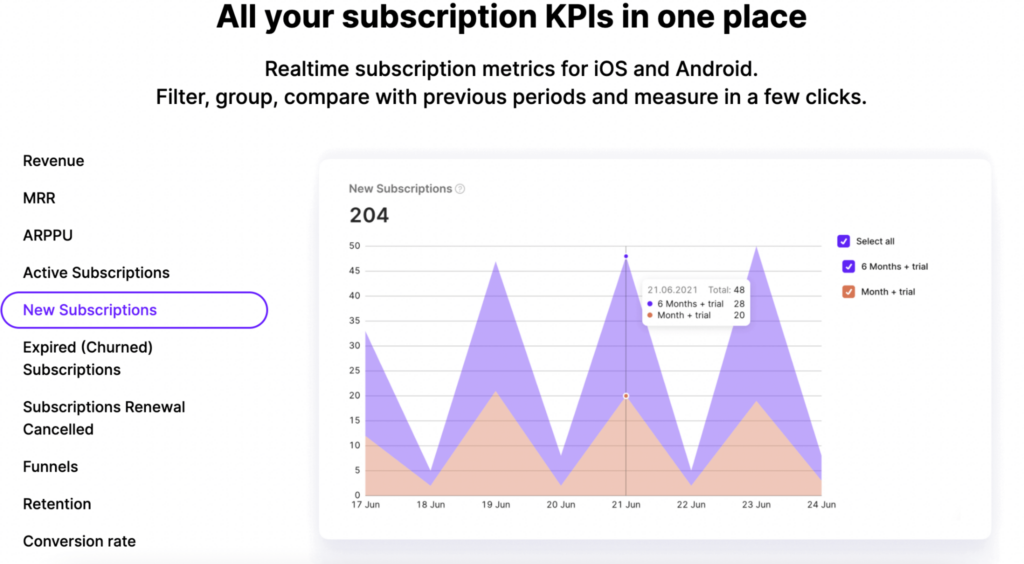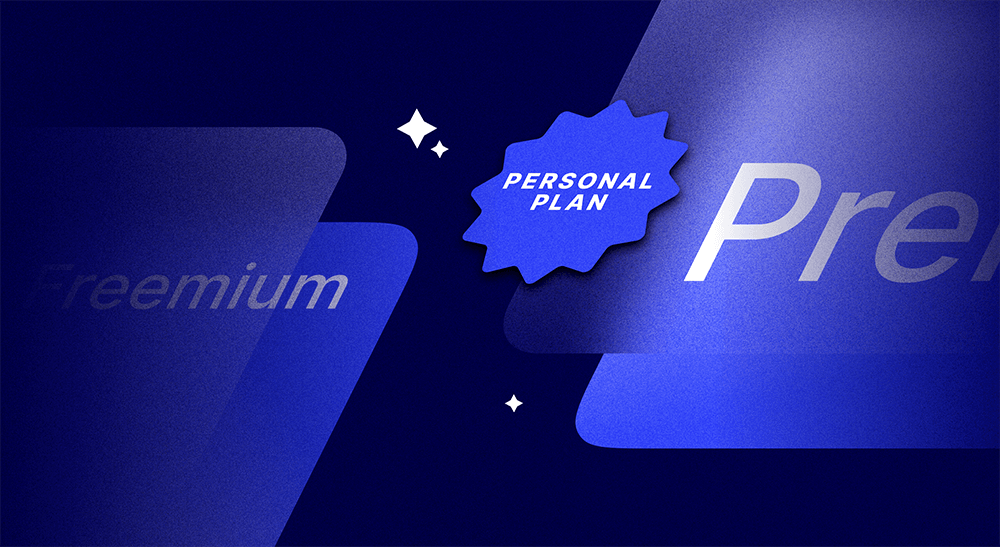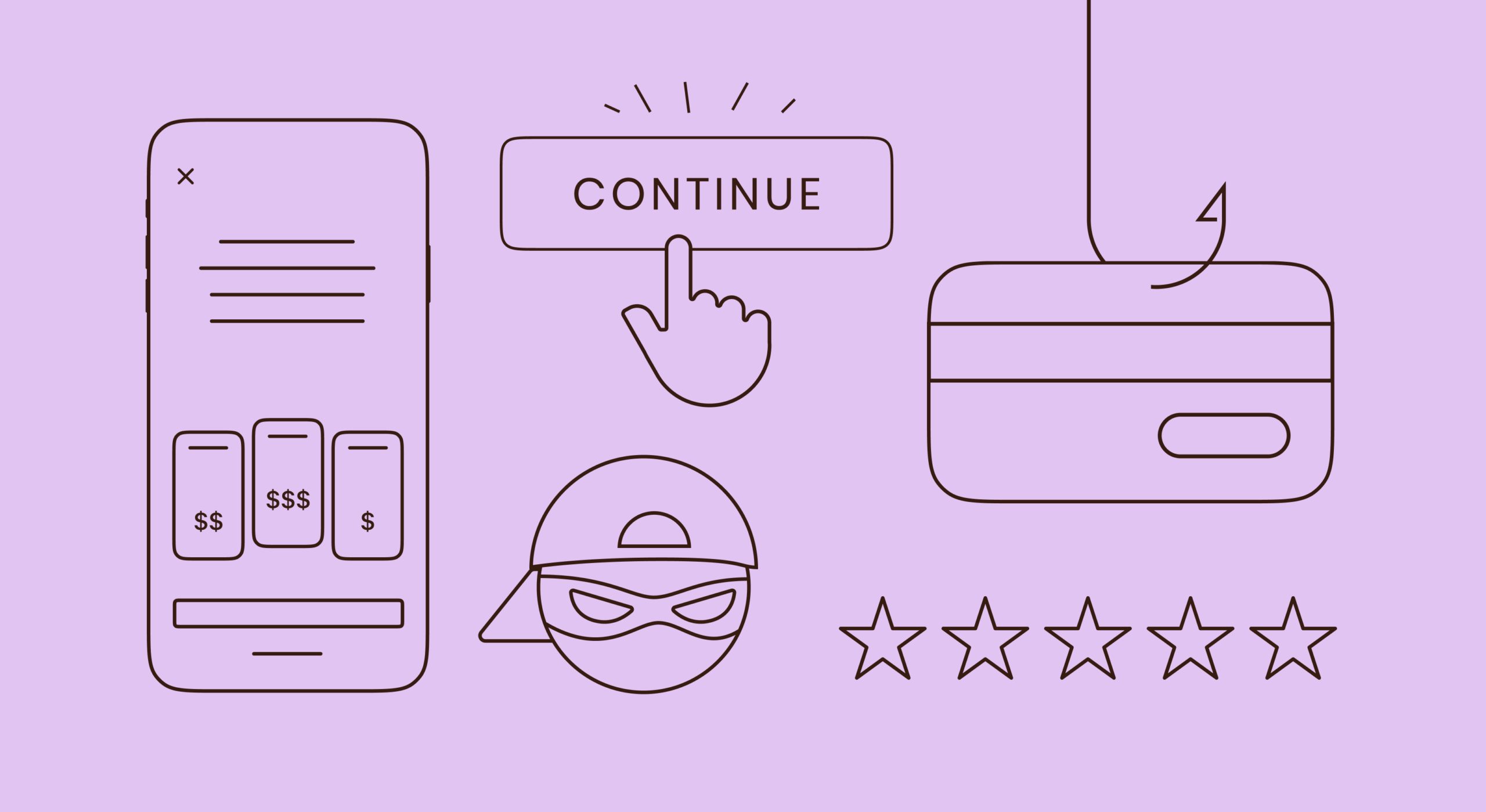Introduction
Today developers and app makers face the challenge of monetizing their mobile applications while still providing value to their audience. One solution to this problem is the digital paywall. It allows developers to restrict access to their app content or features until users become paying subscribers. But paywalls can also limit audience reach and engagement.
A traditional paywall presents the same subscription options to all visitors. A personalized paywall tailors the user experience based on individual preferences, behavior, and demographic data. By providing a customized experience, you can increase the likelihood of a user converting into a paying subscriber. At the same time, it allows you to still maintain engagement and reach for non-subscribers.
We will explore the reasons why a personalized paywall may be the best solution for you as a developer to monetize your mobile apps. We will also provide a step-by-step guide on how to implement a personalized paywall, including best practices and examples from successful implementations.
Why a paywall matters
Paywalls are an important tool for you as an app developer to monetize your app. You can generate revenue by restricting access to your app features for all users until they turn into paying subscribers. This can help sustain and grow your business by providing a steady monthly stream of income.
One of the main benefits of a paywall is that it allows to build a dedicated audience of loyal users. You can provide and promote exclusive content, features, and other perks to paying subscribers. It will create a sense of community and loyalty that can help drive long-term growth and success.
By restricting access to all users, developers face the risk of losing potential audiences. Some of your users may not be ready or willing to pay. A poor user experience also can turn off users and drive them to stop using your app. Personalization can mitigate some of these issues and offer a solution to the challenges of traditional paywalls.
You can personalize user experience based on individual preferences, behavior, and demographic data. It will increase the likelihood of a user converting into a paying subscriber. Personalization can also help to maintain engagement and reach for non-subscribers. It reduces the risk of negative user experiences.

To make the most of a personalized paywall, you need access to robust subscription analytics tools. They can help you track user behavior, identify trends, and optimize your paywall strategy.
Adapty analytics platform is an excellent example of such a tool. It has a simple interface and powerful analytics capabilities. Adapty helps you gain deep insights into your audience and optimize your paywall strategy for maximum revenue and engagement.
The power of personalization
Users often look up “How do I personalize my phone?”. And they look for the best personalization apps for Android and iOS. As a developer, you should be asking yourself how to personalize your app for your users.
Personalization is the process of tailoring experiences to individual preferences, behavior, and demographic data. Mobile app personalization can significantly enhance the user experience. It increases engagement and satisfaction, as well as your revenue.
Personalization can make users feel valued and understood by offering them content that resonates with their interests and needs. This can increase engagement and encourage users to spend more time on an app. They explore more content and become more invested in the brand. Loyal users are more likely to pay, subscribe, and buy your products.
Personalization can also improve user satisfaction with a paywall service. Offer users a subscription package that aligns with their interests. It can make the subscription process feel more natural and less intrusive. This can lead to more positive user experiences and a greater likelihood of conversion.
A personalized experience can demonstrate the value of your app and build a more loyal and dedicated subscriber base. All this helps you grow your revenue.
Examples of successful personalized services
There are a lot of examples of personalized services. The digital market is full of personalized apps. Modern algorithms improve rapidly and allow for ever more personalization of user experience.
Netflix and YouTube are excellent examples of successful personalized services. Both platforms use algorithms to tailor content and recommendations to individual users. These recommendations are based on their viewing or listening history, preferences, and behavior. This approach has helped both companies build a loyal and dedicated subscriber base.

There are also successful mobile app personalization examples. Spotify achieved significant growth due to its personalization features. It utilizes user data and machine learning algorithms to personalize its service. This includes recommendations, playlists, and other features that are tailored to each user’s listening preferences.
Benefits of a personalized paywall
A personalized paywall provides a unique and individualized experience for users. It increases the probability of them subscribing. By leveraging user data and behavior, you can offer users subscription packages that align with their interests and needs. It makes this process feel more natural and less intrusive.
Use this strategy to enhance user satisfaction and minimize any resistance between the user and the paywall. It will result in a greater likelihood of conversion. Personalization enables you to establish a more devoted and committed subscriber base. A personalized paywall makes users feel appreciated and acknowledged by the brand. It is as if it speaks to them directly. This adds a personal touch to the relationship between a customer and your brand.
All this leads to increased revenue and long-term growth for your app.
How does a personalized paywall increase conversions?
You should aim at offering users a subscription package that aligns with their interests and needs. With such personalization, you can demonstrate the value of your mobile application to your returning users. This will help you build a more loyal and dedicated user base. And loyal users are one step away from becoming paying subscribers.
Personalization creates a more natural engagement for users. Personalized paywalls feel an integral part of your service. A smooth experience makes users crave more of your app features and directly leads to higher conversion rates.
Tailored experiences can also reduce churn and retain subscribers. Once they are hooked, users need to feel they are valued. Personalization creates stronger customer relationships. It enhances satisfaction and loyalty to your app in the competitive market.
To boost the increase in conversion rates you can choose money-making keywords. Find more information about relevant keywords in this article.
Data and case studies
Personalized paywalls have been proven effective through various case studies.
McKinsey, a prominent consultancy firm, found that personalization can increase sales by up to 15%, based on their research. These case studies and research support the notion that personalized paywalls can boost user engagement and generate revenue for publishers.

As a developer or app maker, you can benefit from the ability to personalize your content and tailor it to your audience’s preferences, resulting in a more loyal subscriber base.
Personalized paywalls have demonstrated their value in the publishing industry and will likely continue to do so.
Understanding your audience
Understanding your audience is the basis for successful personalization. Personalization relies on data and insights into user behavior, preferences, and demographics. Without a deep understanding of your audience, it’s challenging to offer tailored experiences that resonate with their interests and needs.
You might already have some understanding of your target audience when you develop and launch your app. But once you have an app running it’s crucial to deepen your understanding. User data analysis can help you have a more complete picture of your audience. You will be able to identify trends and patterns that can inform your personalization strategy. This can also help you shape your products and services that resonate with users’ interests and needs.
The success of your personalized paywall depends on your ability to understand and meet the needs of your audience. Prioritize audience research and data analysis. Then you can create a personalized paywall that will increase your revenue.
The use of analytics and data collection
You can use various analytics tools to track user behavior, preferences, and demographics, such as Google Analytics or Adobe Analytics. For real-time subscription metrics for iOS and Android apps, you can use Adapty.

This data can be used to segment users. These segments can then be used to create targeted paywall offers that resonate with users’ interests and needs.
You may discover that a segment of users is highly engaged with a particular feature or type of content. Then you can offer a targeted subscription package that emphasizes these. Or if you see a segment of more price-sensitive users, you can offer a more affordable subscription package with fewer features.
Many apps now include a “sign up” stage as part of their onboarding process. It is an onboarding stage where users are asked to provide certain information. This can be their gender or age or any other relevant information. It is useful to inquire how your users intend to use the app.
It’s essential to be transparent about data collection and use. You should always adhere to relevant privacy regulations and laws. You should clearly communicate your data collection approach and provide users with the option to opt out of data tracking if desired. By doing so, you can build trust with your audience. It ensures that your personalization efforts are ethical and respectful of user privacy.
By leveraging data and analytics, you can refine your paywall strategy. This will maximize user engagement and conversion rates continuously. This data can also help you optimize your strategy to better serve your audience’s needs.
Designing your personalized paywall
You can publish personalized apps for Android and iOS with integrated digital paywalls. It is important to be prepared for app personalization before you start designing your paywall. Pay attention to these key elements of a good personalized paywall design:
- Identifying key user segments
- Determining the right type of paywall
- Crafting personalized paywall messaging and offers
We will consider these factors in detail next.
If you are looking for a no-code paywall solution, you can use Adapty Paywall Builder to create profitable paywalls for your apps and run A/B testing on them.
You can find a comprehensive guide to mobile app personalization paywall in this article.
Identifying key user segments
You can use various analytics tools to gather user data and analyze user behavior. This will help to identify distinct audience segments.
Consider these factors when identifying user segments:
- Demographics: Age, gender, location, and other demographic information can help you understand your audience’s needs and interests.
- Content consumption: Analyzing the types of content that users consume and engage with can help you identify the topics and formats that are most popular among your audience.
- Engagement: Click-through rates, time spent on a page, and social shares, can help you identify the most engaged and loyal users.
- Purchase history: Analyzing user purchase history can help you understand which subscription packages and features are most popular among your audience.
The Wall Street Journal’s Analytics Manager, John Wiley, says in an interview with the Drum that an adaptive paywall “allows you to pick the threshold based on past patterns of engagement. If there is a certain type of reader who will most likely convert on their fourth visit and another type who most likely converts on the seventh, the model will reflect that.”
By identifying key user segments, you can create targeted paywall offers. This is the direct path to higher conversion rates.
Determining the right type of paywall
When it comes to designing a personalized paywall, you must choose the right type of paywall service. It should fit your business model and goals. There are several types of paywalls, including:
- Hard paywall: A hard paywall requires users to pay upfront to access any content.
- Soft paywall: A soft paywall allows users to access some content for free before asking them to subscribe.
- Freemium: Freemium paywalls offer a basic level of content for free, with more advanced or exclusive content available only to paid subscribers.
- Metered paywall: A metered paywall allows users to access a set number of content items for free before requiring them to subscribe.
The right type of paywall depends on your business model, audience, and content. The right type of paywall can maximize your revenue potential. It also maintains audience engagement and loyalty.
Crafting personalized paywall messaging and offers
You should aim at developing personalized messaging and offers. It is essential to understand the user’s behavior and interests to do this successfully. This can be achieved through analyzing user data as discussed above. Based on this information, messaging and offers can be personalized to align with the user’s interests and preferences.
Don’t forget to have a useful onboarding process. Gather information about the user, which can be used later on to personalize the paywall and offers that you make. Those can be based on gender, age, location, or any other factor that is relevant to your app.
Personalized offers can also be effective in converting users into paying subscribers. Offering a free trial or a discounted subscription to users who have previously engaged with premium content can encourage them to subscribe. This type of offer can also be tailored to the user’s preferences. You can offer a trial to a specific section of the publication in which they have shown some interest.
It is essential to use modern tools for this. Here you can learn more about setting up the remote configuration for mobile app paywalls to make it easier for you to manage personalized messaging and offers.
Testing and optimizing paywall design
Testing and optimizing your paywall design is critical for ensuring maximum efficiency and effectiveness. You should run extensive A/B testing. It can be used to test different designs, messaging, and offers to see what resonates best with users. You can run A/B testing to have a better understanding of your user segmentation as well.
Analyzing data and user feedback can also help you identify areas for improvement. Make regular, iterative changes to your paywall. By continuously testing and optimizing the paywall design, you can improve user engagement, increase conversion rates, and maximize revenue.
Learn more about the efficiency and opportunities in A/B testing with Adapty.

Role of technology in implementing
Implementing a personalized paywall requires advanced technology. New tools allow you to effectively collect and analyze user data, create targeted offers, and provide a seamless user experience. Artificial intelligence (AI) and machine learning tools can be used to analyze user data and behavior patterns.
Data management platforms (DMPs) can help collect and organize user data from third parties. DMPs then allow you to create user profiles and leverage this data for deep personalization.
A single sign-on (SSO) system allows users to access multiple services with one set of credentials. Like when you sign in to different services with your Facebook or Google accounts. This allows those third parties to collect more diverse user data. They then can conduct better personalization profiling for them across services.
Advanced payment processing systems can also be used to streamline the subscription process. Your payment system should make it quick and easy for users to sign up and access premium content.
By leveraging advanced tools and platforms, you can create a highly customized and targeted paywall experience that resonates with users and drives revenue.
Popular tools and solutions
There are a variety of tools and solutions available for building personalized paywalls. They range from customer relationship management (CRM) systems to dedicated paywall platforms.
Some popular CRM systems can be used to collect and manage user data, as well as track user interactions and behavior. Dedicated paywall platforms, such as Adapty, offer a range of features, including paywall design and customization, A/B testing, user segmentation, and targeting.
You should choose the right solution for your personalized paywall. It’s important to consider your specific needs and budget. Pay attention to the size and scope of your offer, the level of personalization you want to achieve, and the ease of integration with your existing systems and tools.
It may be helpful to research and compare different solutions. Read reviews and case studies, and reach out to other developers for recommendations and advice. You can request demos and presentations of the paywall services. Spend some time carefully selecting the right approach for your personalized paywall. With this, you can create a seamless and effective user experience and build a loyal subscriber base that drives revenue.
Tracking and optimizing performance
By tracking key metrics, you can gain insights into user behavior and preferences. You will be able to identify areas for improvement and optimize your paywall strategy accordingly.
One of the most important metrics to track is conversion rate. It measures the percentage of users who subscribe. This metric provides insight into how well your paywall messaging and offers work. You will see whether they have traction with your audience. Use this to identify opportunities to improve your conversion strategy.
Another important metric is the so-called churn rate. It measures the percentage of subscribers who cancel their subscriptions over a given period of time. You should seek insights into why subscribers are leaving. This will inform you of which steps to take to address those issues. You can see how to improve the content or make more personalized offers.
Customer lifetime value (CLV) is another key metric to track. It measures the total revenue a subscriber generates over the course of their subscription. By understanding CLV, you can identify your most valuable customers. This is your core audience segment. You should understand this early and tailor your paywall offers and messaging to them.
You should constantly optimize your personalized paywall. Use data to refine your audience segmentation and targeting. Conduct A/B testing to compare different paywall designs, messaging, and offers. You can test different offers to various user segments by offering a discount to users who have previously viewed a certain type of content or used certain features. You can configure different prices, trial periods, and promo offers in Adapty without app releases. This means you will not disturb your users with excessive app updates.
You can also track other performance indicators. Consider data like bounce rate and engagement metrics. With these, you can gain a deeper understanding of your paywall’s effectiveness.
Localizations in the Adapty paywall builder
Do you want to show the localized paywalls faster? You can now use separate JSONs for different localizations in Adapty. When you add a localization, you see the locale code needed for the Adapty.getPaywall() method to fetch the localized remote config. Use this feature to increase conversions by being closer to local cultures.
Discover our updated paywall builder! Craft the perfect paywall, experiment with various settings, and find the ideal balance to captivate your global audience. Get started with Adapty today – where your app meets the world, one locale at a time!
Conclusion
Today’s digital market is dominated by mobile personalization and personalized apps. Personalized paywalls have become an essential tool for developers and app makers. This helps to generate revenue and build a dedicated audience. By tailoring the paywall experience to individual users, you can increase your conversion rates, reduce churn, and create stronger customer relationships.
Through data collection and audience segmentation, you can better understand your users. Then you are able to create personalized messaging and offers to incentivize subscriptions. Implementing a personalized paywall requires a strategic approach. This includes identifying key user segments, determining the right type of paywall, and crafting personalized paywall messaging and offers. Successful paywalls utilize modern technologies such as artificial intelligence and data management platforms to optimize performance.
Measuring key metrics such as conversion rate, churn rate, and customer lifetime value is crucial. This allows to track the performance of a paywall and make informed decisions on optimization. A/B testing and refining audience segmentation can further enhance the paywall experience for users.
A personalized paywall is an effective way to monetize your app. Adapty offers a comprehensive suite of subscription analytics tools and paywall solutions to help you implement personalized paywalls and optimize performance.
By taking a strategic approach and leveraging the right technology, you can create a successful personalized paywall and build a thriving digital business.
Users are looking for the best personalization app and developers can meet them halfway by personalizing their paywalls.




